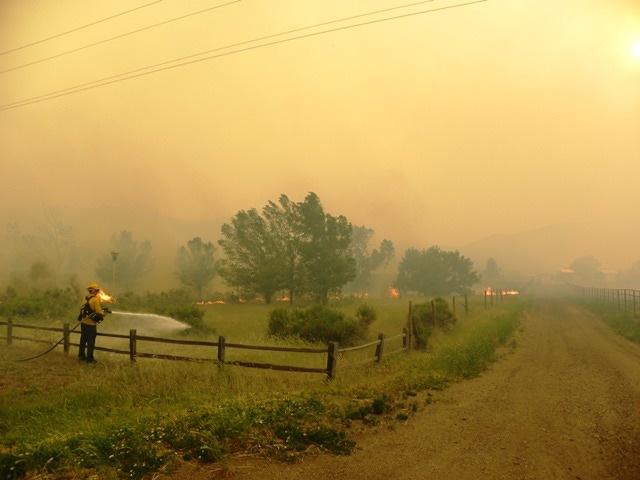Wildfire Season Is Shaping Up To Be A Doozy
With severe drought still gripping much of the West, conditions are ripe for a devastating fire season.

Ah, statistics. We live in a world that cannot function without them. Yet often, statistics can be misleading. Consider, for example, the fact that early-spring wildfires were down in both number of fires and acres burned this year, compared with the last two years.
“But we should not be lulled into a sense of false security about the nature of the upcoming fire season,” says USDA Secretary Tom Vilsack. Last year saw 9.3 million acres go up in smoke, the biggest fire year since 1960, and this year is shaping up to be every bit as bad.
According to Jeremy Sullens, a wildland fire analyst at the National Interagency Fire Center in Boise, ID, the 2013 fire season is really a tale of two halves. “In the eastern U.S., we’ve seen quite a bit of frequent and periodic precipitation, and we’ve seen a reduction in the number of acres burned that we would normally see this time of year. Largely that’s because we’ve seen most of our fires across the eastern and southeastern U.S.”
Enjoy what you are reading? Subscribe to BEEF Daily for industry hot topics Monday-Thursday.
However, as the country moves into the summer fire season of June, July and August, the fire threat transitions to the western half of the country. And in the West, Sullens says, it’s a very different story.
The western U.S. is still experiencing severe drought in places. “What that’s leading us to is an expectation that we’re going to see some above-normal, significant fire potential across the Southwest, moving up into portions of the Four Corners area,” he says. That threat will likely tail off as the area moves into its monsoon season in July.
“Where we’re really thinking we’re going to have a problem this fire season is in the Pacific Coast states into Idaho and southwestern Montana,” he says. “So across California, Oregon and south-central Washington, and moving into the mountainous areas of Idaho and southwestern Montana, we’re expecting very dry conditions [combined] with heavier fuel types.”
Areas of lighter vegetation, such as the grasslands of the Great Basin, will remain dry. “But the drought has had such an impact that we don’t have the fuel [load] that we would in a normal season. So we’re expecting fires to occur in those areas, but we’re not likely to see the large, significant fires that we saw last year.”
For a complete fire-season outlook, and ways you can protect your home and property, check out these websites:
About the Author(s)
You May Also Like


.png?width=300&auto=webp&quality=80&disable=upscale)
